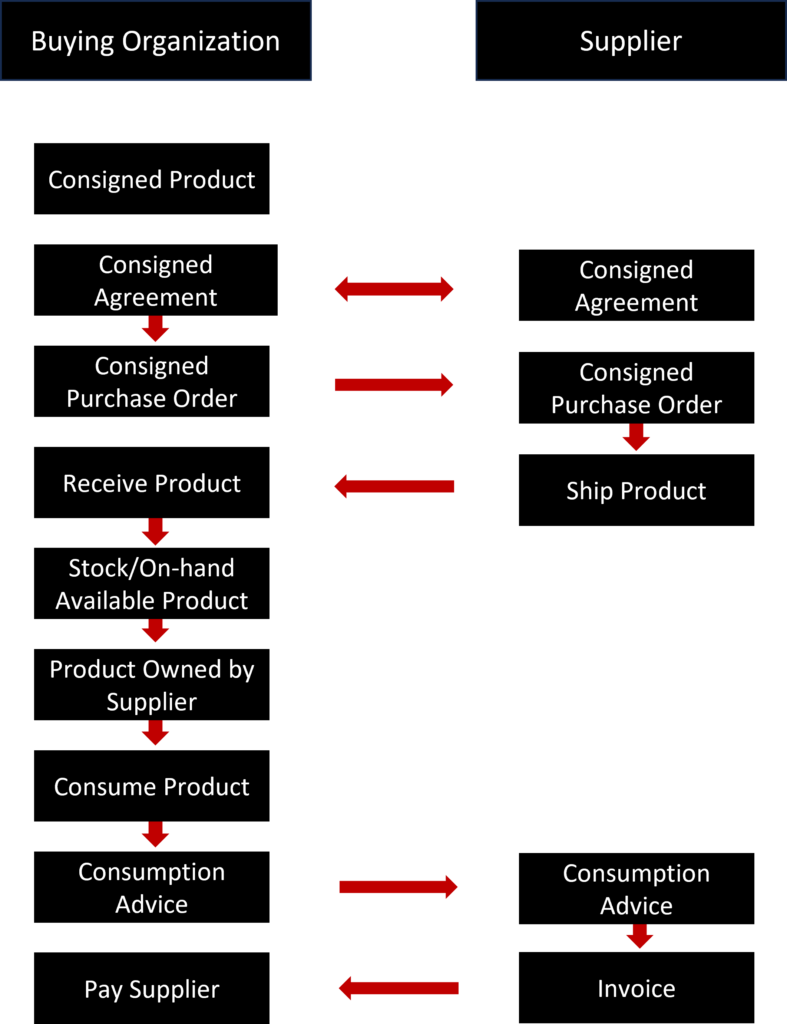Consigned Inventory is today’s supply chain reality to reduce inventory carrying cost as well as reducing related warehouse infrastructure and maintenance cost. Companies have adopted this model as an alternative to owning stock of inventory for a variety of reasons:
- Lowers the risk of price fluctuation impacting inventory valuation.
- Augments working capital utilization.
- Lowers manufacturing cost by reducing inventory carrying cost.
Depending on the nature of the business, an enterprise may choose to write a consignment contract with its supplier for high-volume products that are needed for internal consumption, manufacturing, or for trading/selling to its customers. Today companies adopt newer models of efficiency by controlling capital spend, and inventory carrying cost by managing their processes outside the four walls of warehouses and factories.
Consigned Inventory
To efficiently manage inventory stocking and reduce carrying cost, Oracle Supply Chain Management Cloud offers consigned inventory.
It enables or supports the organization to source the product from the supplier, where ownership of the inventory remains with the supplier until it is consumed by the buying organization. On consumption, the buying organization communicates the consumption advice with product details and quantity, thus enabling the supplier to generate a payables invoice to settle the product sell process.
Oracle Supply Chain Management Cloud supports this process by allowing the buying organization to monitor, check, and replenish consigned product stock quantity with a clear distinction as supplier-owned inventory and procure them seamlessly as required but at the same time not owning the cost and thus restricting the inventory valuation.
Consigned Inventory Process Flow and Use Case
Guide to Oracle Cloud: 5 Steps to Ensure a Successful Move to the Cloud
Explore key considerations, integrating the cloud with legacy applications and challenges of current cloud implementations.
The following process depicts a flow and use case, where the buying organization identifies a product, negotiates, writes, and activates a consignment contract with the supplier.
Activation of a contract gives buying organization the capability to release a consigned purchase order to the supplier, against which the supplier delivers the consigned inventory / material.
Upon receipt of a consignment inventory, the buying organization gains the visibility of on-hand availability of the product with an identifier as the product is owned by the supplier. Depending upon the consumption schedule or manufacturing schedule, the product is available for consumption.
Once, the product is consumed, a consumption advice is generated which signifies product ownership is now supposed to get transferred from the supplier to the buying organization. Based on the consumption advice received, supplier raises an AP Invoice to get paid and thus complete the full procurement process.

Key Configuration and Execution Process in Oracle Supply Chain Cloud:
- Identify and configure consigned product/item.
- Configure Consignment Agreement
- Negotiate, approve, and activate the Consignment Agreement
- Create Consigned Purchase Order referencing the Consignment Agreement
- Communicate Consigned Purchase Order to supplier.
- Supplier acknowledges the purchase order and delivers the product.
- Receive Consigned Purchase Order product.
- On–hand/stock is available for consumption with an identifier supplier owns the product.
- Product is consumed by the buying organization and ownership transfer is executed.
- On consumption of material, consumption advice is generated and communicated to the supplier.
- Supplier raises the payable invoice for the product and quantity based on consumption advice.
- Buying organization pays the supplier.
Consigned Inventory in Action
With the pandemic impacting supply chain operations considerably, organizations are facing challenges such as changes in customer product buying behavior, inflation/shrinkflation, fluctuating product demand, and quality challenges due to labor and logistical limitation. At the peak of the pandemic, organizations faced challenges of inventory stocked up for more than 12 -18 months, due to disinterest in customer consumption and buying behavior, and economic slowdown. This led to a complex situation for organizations not only to manage the stocking and warehousing of products but also to manage the expiration of products due to the end of the shelf life and scrapping them with a substantial hit on capital employed for these products/inventory.
Due to this reason, organizations are increasingly having pressure to manage inventory and more so carrying the inventory cost dependent on unknown variables impacting their revenue. Adoption of a consigned inventory model helps organizations to hedge fluctuating inventory carrying cost, elongate product sales cycle and capital employment leading to better revenue and margin management. With the adoption of this model, organizations are no longer required to own the product until it is consumed or sold to the client, leading to benefits such as recognizing better margins and controlling losses on scrap sales and cost incurrence to manage expired inventory.
Perficient is helping a multinational manufacturing + EPC client with operations in the US, China, Brazil, and Poland to implement a consigned inventory model to efficiently employ capital, manage and allocate inventory for their client projects and manufacturing facility. The goal to roll out this solution is to efficiently control and bring down inventory carrying cost, better utilization of warehouse resources/infrastructure and better visibility of inventory through effective replenishment and elimination of distressed inventory sale.

